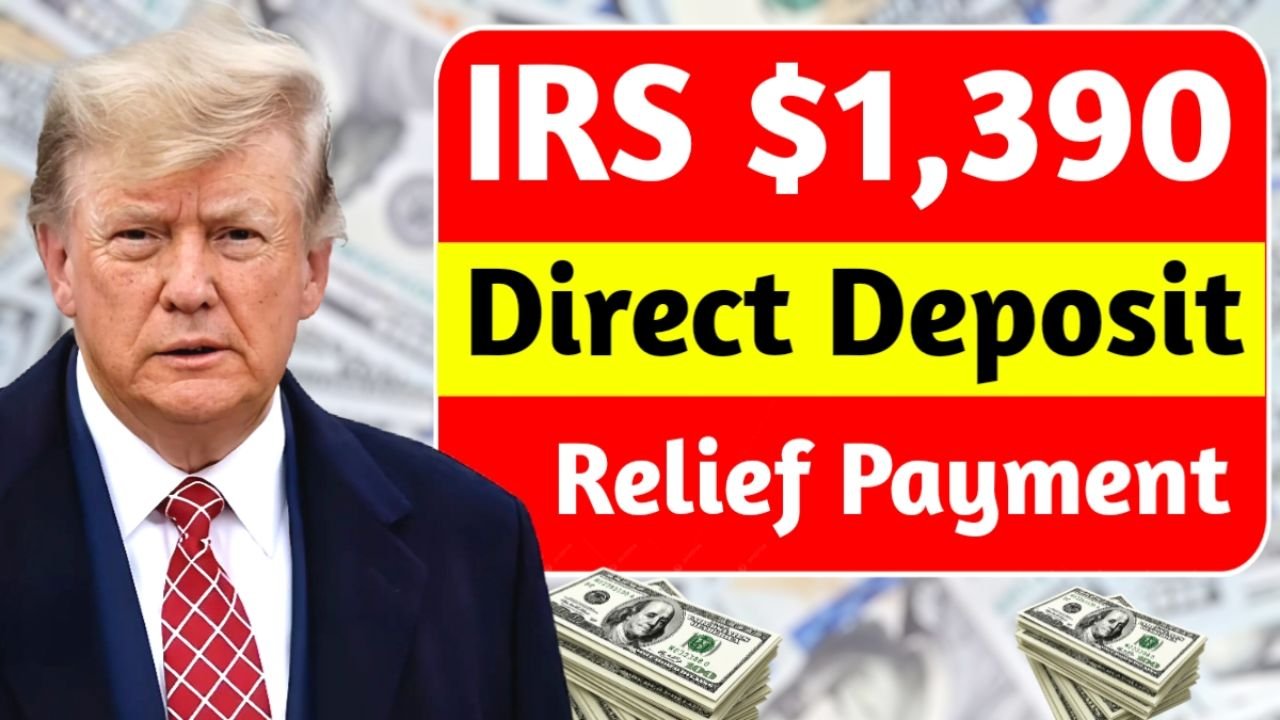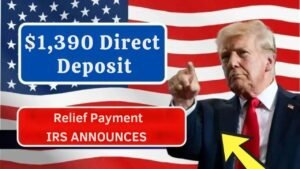Millions of Americans struggling with rising daily expenses are set to receive important financial support through the IRS $1,390 Direct Deposit Relief Payment, confirmed for rollout in November 2025. With inflation raising the cost of food, rent, healthcare, utilities, and transportation, this targeted relief program aims to bring quick assistance directly to eligible taxpayers’ bank accounts—no application required.
The IRS will use 2024 tax returns and federal benefit records to verify qualifications, making the distribution process automatic, secure, and faster than traditional stimulus programs.
Why the Government Launched the $1,390 Relief Payment
Inflation has put tremendous pressure on American households in recent years. Prices for essentials like groceries, childcare, rent, medical services, and fuel have climbed sharply, shrinking budgets and increasing financial anxiety.
The $1,390 direct deposit aims to:
- Provide immediate financial relief
- Support low- and middle-income families
- Help seniors and fixed-income households manage essential expenses
- Strengthen local economies through increased consumer spending
By sending funds directly to bank accounts, the government ensures fast, error-free delivery while reducing delays caused by paperwork or mail processing.
Key Features of the IRS $1,390 Direct Deposit Relief
The program is designed to be simple, secure, and accessible to millions of eligible Americans.
What the Program Offers
- $1,390 for eligible single filers
- $2,780 for married joint filers
- Automatic direct deposit—no forms required
- Based entirely on verified 2024 IRS tax data
- Paper checks only for individuals without bank information on file
This ensures money reaches families quickly, especially those facing urgent financial needs.
Eligibility for the IRS $1,390 Relief Payment
The IRS will determine eligibility automatically using income, filing status, and benefit records.
Who Qualifies?
- Single Filers earning under $75,000 – eligible for the full $1,390
- Married Joint Filers earning under $150,000 – eligible for $2,780
- Dependents – may receive partial benefits
- Social Security, SSI, SSDI, and VA beneficiaries – eligible through existing systems
No Additional Steps Required
The IRS will process payments based on your latest information. There is no need to apply or update documents unless you recently changed your:
- Address
- Bank account
- Filing status
November 2025 Payment Schedule
The IRS will release the funds through a phased rollout to ensure smooth and secure processing.
Expected Deposit Timeline
- Early November: Direct deposits for taxpayers with bank information on file
- Mid-November: Payments for Social Security, SSI, SSDI, and VA recipients
- Late November: Paper checks mailed to eligible taxpayers without direct deposit
Direct deposits usually clear in 3–5 business days, while paper checks can take up to two weeks depending on postal delivery.
How This Payment Helps Households & the Economy
The $1,390 relief payment is expected to provide meaningful support for families struggling with:
- Grocery costs
- Rent and utility bills
- Medical expenses
- Fuel and transportation
- Childcare and home essentials
On a broader scale, the payment boosts local economic activity. When households spend on necessities, small businesses benefit, job stability improves, and community economies strengthen.
How This Relief Differs from Previous Stimulus Checks
| Feature | Pandemic Stimulus Checks | IRS $1,390 Relief Payment |
|---|---|---|
| Eligibility | Broad, most taxpayers | Income-based & targeted |
| Funding | Emergency COVID funds | Inflation relief budget |
| Delivery | IRS + Treasury | IRS direct deposit first |
| Frequency | Multiple rounds | One-time payment |
| Purpose | Pandemic support | Cost-of-living relief |
FAQs: IRS $1,390 Direct Deposit Relief
1. Do I need to apply for the $1,390 payment?
No. Payments are automatic based on your 2024 tax return or Social Security records.
2. Who qualifies for the payment?
Single filers earning under $75,000 and joint filers under $150,000.
3. When will payments be deposited?
Beginning November 2025, with most deposits completed by late November.
4. What if my payment is delayed?
Common reasons include incorrect bank details, address changes, or processing delays. Check your IRS account for updates.
5. Is the payment taxable?
No. The $1,390 relief payment is tax-free and does not affect other benefit programs.
Conclusion
The IRS $1,390 Direct Deposit Relief Payment offers timely support to Americans facing rising living costs in 2025. With automatic eligibility checks, fast direct deposits, and a clear payment schedule, the program ensures help reaches those who need it most. To avoid delays, keep your IRS and bank information up to date and monitor the official IRS portal for updates.





